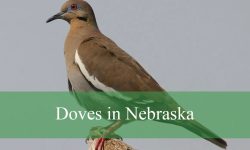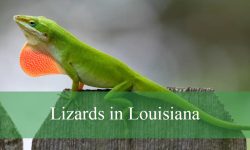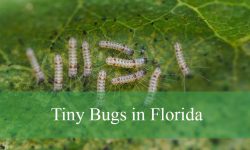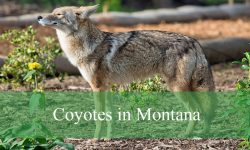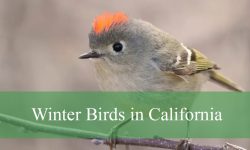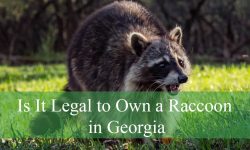The arid deserts and rugged terrain of Utah host a variety of biting ants, each adapted to its unique environment and lifestyle. From the fiery sting of harvester ants to the sharp bite of velvety tree ants, these small insects can pack an unpleasant punch when disturbed.
While most ants in Utah are harmless and beneficial to the environment, a few species can bite or sting humans when defending their colonies. Knowing how to identify them can help you avoid painful encounters, especially when hiking, gardening, or working outdoors.
This guide covers seven of the most common biting ants in Utah, complete with pictures and identification details. You’ll learn about their size, color, nesting habits, and how dangerous they can be to people and pets.
Different Types of Biting Ants Found in Utah
Harvester Ant (Pogonomyrmex spp.)
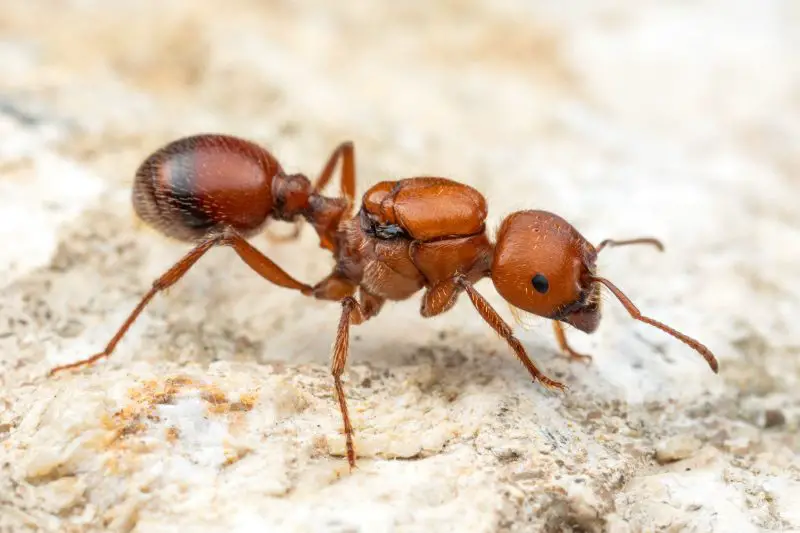
Harvester ants are among the most aggressive and easily recognized biting ants in Utah. They are medium to large in size, typically ranging from 6 to 12 millimeters long, and are reddish to dark brown in color. Their bodies appear somewhat shiny, with large heads and powerful mandibles used to crush seeds and defend their colony. These ants are known for clearing circular areas around their nests, creating visible “bare zones” free of vegetation that can stretch several feet wide.
Identification is quite straightforward because harvester ants prefer dry, sandy, or gravelly areas where they build large, cone-shaped mounds. They are often found in open deserts, prairies, and grasslands throughout Utah. The mounds may have multiple entrance holes and can sometimes reach several inches high. Their slow, deliberate movements distinguish them from faster species like pavement or field ants.
Behaviorally, harvester ants are mostly seed collectors, feeding on dry plant material and small insects when available. However, they are highly territorial and will aggressively defend their colony from intruders, including humans. When disturbed, they swarm rapidly and may deliver multiple stings and bites. The sting is extremely painful and often described as burning, comparable to a wasp sting.
In terms of danger, harvester ant stings can cause severe pain, swelling, and in rare cases, allergic reactions. Although fatalities are extremely rare, some individuals experience intense localized pain and inflammation that lasts for several hours. For this reason, stepping on or near a harvester ant mound without protection should be avoided at all costs, especially in rural or desert regions of Utah.
Velvety Tree Ant (Liometopum occidentale)
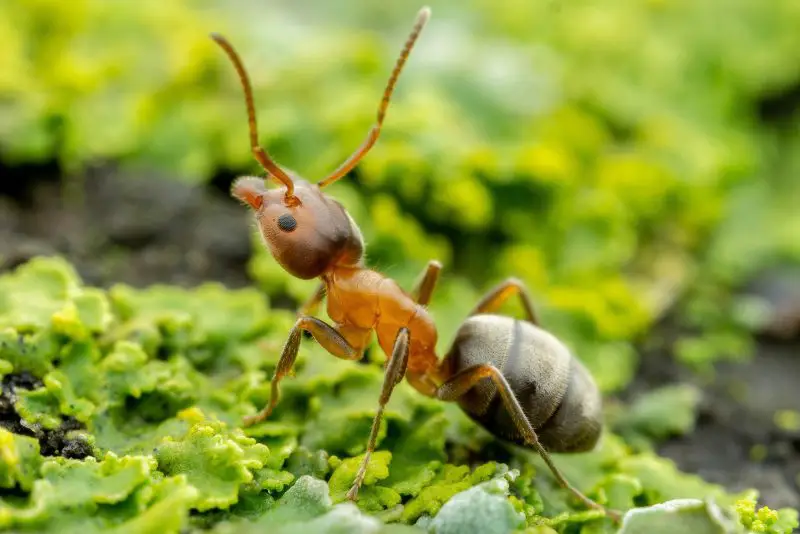
The velvety tree ant is one of the more unique ant species found in Utah’s woodlands and high-desert areas. As their name suggests, they have a distinct velvety appearance, with dark brown to black heads and thoraxes, and reddish-brown abdomens covered in fine, soft hairs. Adults measure between 4 and 6 millimeters long, and colonies can contain thousands of workers. Their slender, elongated bodies and fast-moving behavior make them easy to identify when foraging on trees and shrubs.
These ants prefer to live in hollow trees, old logs, or under loose bark where moisture and decaying wood provide shelter. They are especially active during warm months and can sometimes enter homes searching for food. Velvety tree ants are omnivorous, feeding on honeydew from aphids, plant sap, and small insects. Colonies can be large, spreading across multiple nesting sites connected through foraging trails along trees or building walls.
Unlike most Utah ants, velvety tree ants are known for both biting and chemical defense. When threatened, they can deliver a sharp bite and then spray formic acid onto the wound. The result is a painful burning sensation that may persist for several minutes. While their bite is not venomous, it can cause irritation or small blisters, especially on sensitive skin.
Though not life-threatening, the velvety tree ant’s aggressive defense makes it a nuisance when nesting near human structures. Their strong odor and painful bites make them unpleasant invaders in outdoor areas, especially in parks, campgrounds, and backyards with old trees. Keeping trees trimmed and sealing cracks in wooden structures helps reduce infestations.
Carpenter Ant (Camponotus spp.)
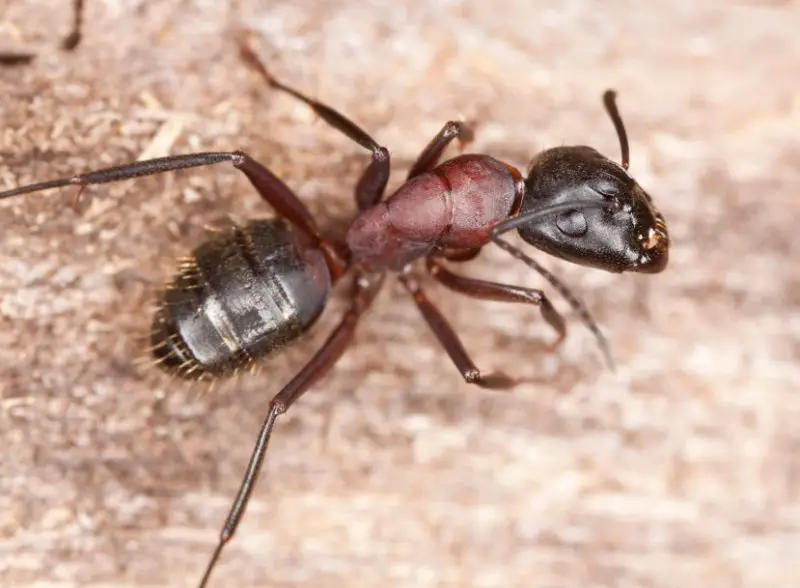
Carpenter ants are among the largest ants found in Utah, reaching lengths of 6 to 13 millimeters. They have shiny black or dark reddish bodies, large heads, and prominent mandibles that can deliver a sharp bite. Their bodies are smooth and segmented, with a single node (or “waist”) between the thorax and abdomen—a key trait distinguishing them from other large ant species. The workers vary in size within a colony, giving them a distinctive, uneven appearance.
These ants prefer moist, decaying wood for nesting, making them common in forested areas, old logs, and wooden structures such as fences, decks, and houses. Carpenter ants do not eat wood like termites; instead, they excavate galleries inside it to build their nests. Their presence is often indicated by sawdust-like debris (called frass) near entry holes. Colonies are most active during spring and summer, especially at night when workers forage for food.
Carpenter ants can bite humans when threatened, and their bites can be quite painful due to their strong jaws. While they do not sting, they can inject a small amount of formic acid into the bite, causing a mild burning sensation. Typically, the pain fades within a few minutes, but it may leave a red mark or swelling in sensitive individuals. Repeated bites are rare unless the colony is disturbed.
Though not medically dangerous, carpenter ants can cause structural damage over time by hollowing out wood. Infestations in homes are a serious concern, as colonies can expand into walls or floors. Prevention includes keeping wooden structures dry, sealing entry points, and removing decaying wood near buildings. Regular inspection is key for avoiding costly repairs.
Field Ant (Formica spp.)
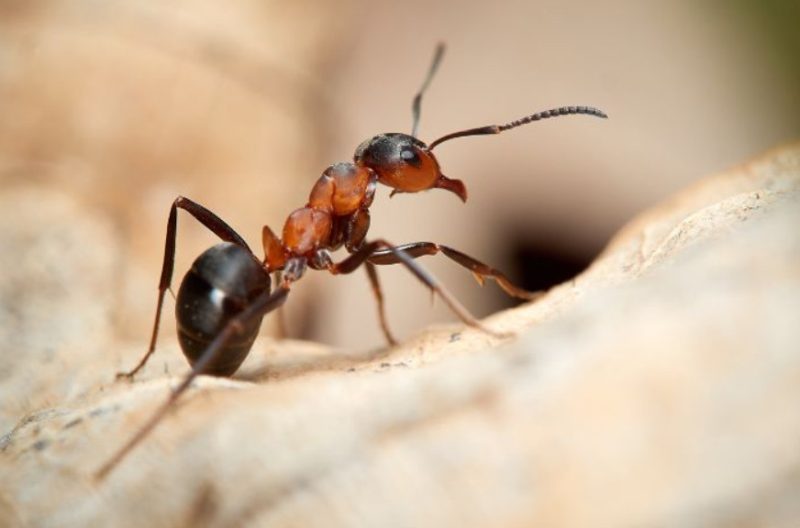
Field ants are common throughout Utah, especially in grasslands, parks, and open fields. They vary in size from 4 to 8 millimeters long and come in several color variations, including reddish-brown, black, and a mix of both. Their bodies are covered with short, fine hairs and have a smooth, shiny surface. Unlike some smaller household ants, field ants have larger heads and mandibles, making them noticeable while foraging outdoors.
These ants build large mound nests made of soil, leaves, and small twigs, often visible in sunny, open areas. Colonies can grow very large, with thousands of workers maintaining multiple interconnected chambers. Field ants are active during the day, feeding on insects, nectar, and honeydew produced by aphids. They play an important ecological role as scavengers, helping to recycle organic matter in Utah’s ecosystems.
While they do not sting, field ants can bite aggressively when disturbed and release formic acid into the bite area. This combination produces a painful burning sensation and sometimes minor skin irritation. The pain usually fades within an hour, though scratching can worsen the reaction. Their bites are not venomous, but in large numbers, field ants can make outdoor activities unpleasant.
Though not dangerous to humans, their large colonies can disrupt lawns and gardens, particularly when mounds appear near sidewalks or patios. Maintaining trimmed vegetation and removing old debris helps prevent infestations. Despite their defensive behavior, field ants are ecologically beneficial and generally best left undisturbed unless they become a nuisance near homes or recreational areas.
Pavement Ant (Tetramorium caespitum)
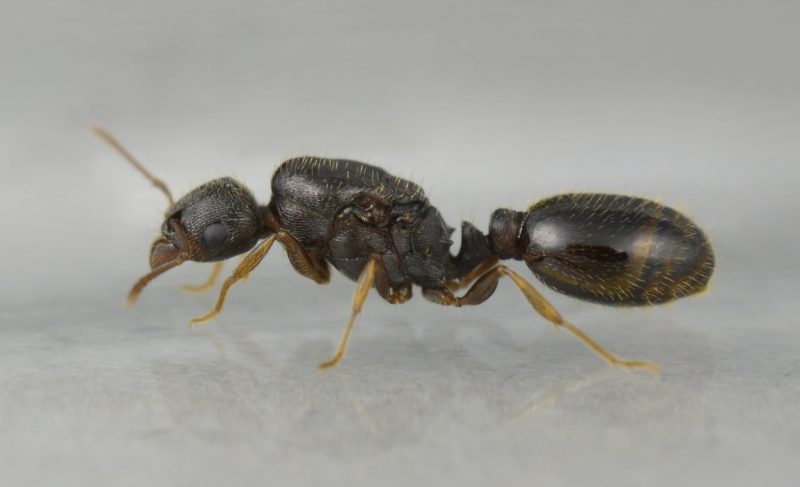
The pavement ant is one of the most widespread species in Utah’s urban and suburban areas. These small ants typically measure around 2.5 to 4 millimeters long and have dark brown to black bodies with lighter-colored legs and antennae. When seen up close, their bodies display fine ridges and grooves on the head and thorax. Colonies are often found nesting under pavement cracks, sidewalks, driveways, or building foundations, which is how they earned their name.
In terms of identification, pavement ants are most easily noticed by their foraging trails. They move slowly and often appear in large groups when searching for food, especially sweets and greasy substances. Inside homes, they are commonly found in kitchens and bathrooms, entering through small gaps or cracks. Their nests usually consist of small piles of soil pushed up through cracks in concrete or along the edges of pavement.
Behaviorally, pavement ants are persistent scavengers. They feed on a wide variety of materials, including dead insects, crumbs, and pet food. Though they rarely sting, pavement ants can bite if handled or threatened. Their bites are generally harmless, producing only mild irritation that disappears quickly. Colonies may fight neighboring colonies during summer, resulting in noticeable ant “wars” on sidewalks or patios.
For humans, pavement ants are not particularly dangerous but can be a nuisance due to their indoor invasions. Because they are small and able to exploit even tiny openings, infestations can be difficult to fully eliminate without professional pest control. Keeping floors clean, sealing cracks, and removing food waste are effective measures to discourage their presence in Utah homes and commercial buildings.
Odorous House Ant (Tapinoma sessile)
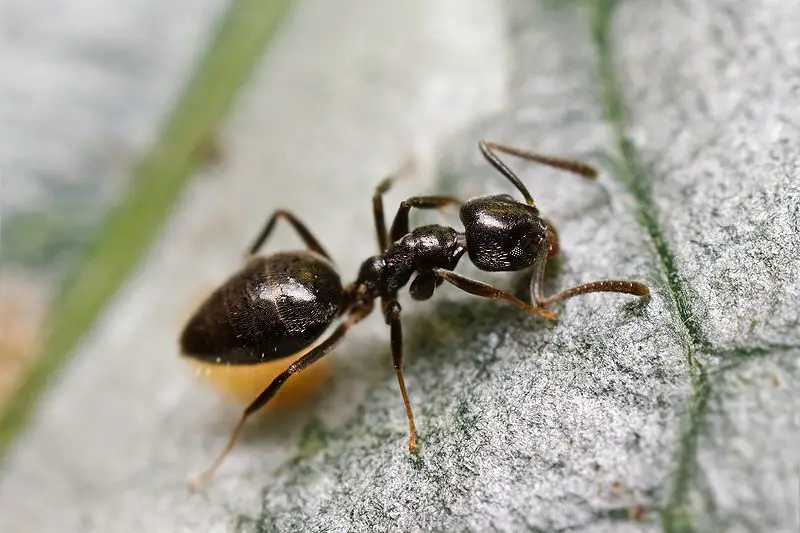
The odorous house ant is a small but troublesome species found throughout Utah. Measuring only 2 to 3 millimeters long, these ants are brown or black and have a smooth, shiny body. Their name comes from the distinct, rotten coconut-like odor they release when crushed—a key identification feature. Their bodies are uniform in size, and unlike some other species, they have a single flattened node on their waist that’s difficult to see without magnification.
These ants are extremely adaptable and can live both indoors and outdoors. Outdoors, they nest under rocks, mulch, or logs, while indoors they prefer wall voids, insulation, or damp areas near plumbing. Colonies can contain many queens, making them difficult to control once established. Odorous house ants are attracted to sweets and often forage in kitchens, bathrooms, and pantries.
Though they do not sting, odorous house ants can bite mildly if threatened, though their bites are not painful. Their main nuisance comes from the large numbers that invade homes in search of food and water. Colonies may split into multiple sub-nests when disturbed, spreading infestations throughout a structure. They are active year-round, particularly during spring and summer when foraging activity increases.
From a human health standpoint, odorous house ants are not dangerous. They do not transmit diseases or cause structural damage, but their persistence can make them difficult to eradicate. Keeping food sealed, wiping spills, and maintaining dry indoor conditions are key to prevention. Professional treatment may be required when large colonies persist indoors, especially in older Utah homes with multiple entry points.
Pharaoh Ant (Monomorium pharaonis)
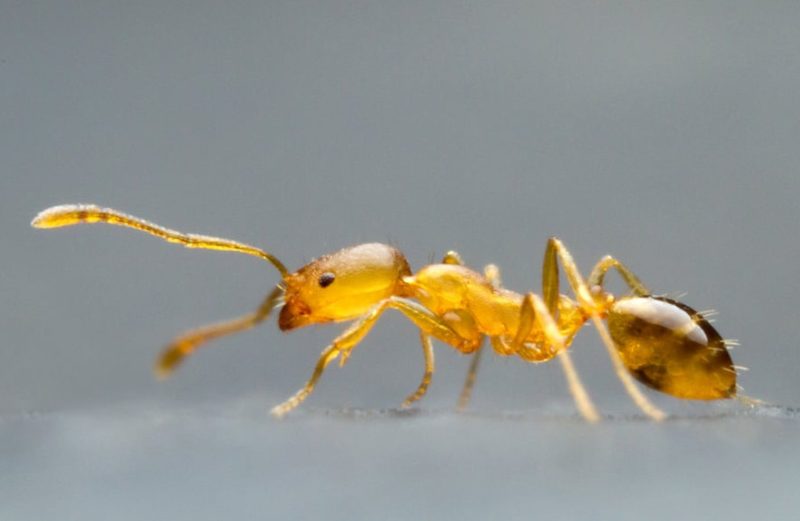
The pharaoh ant is a tiny yet highly persistent species found in many indoor environments across Utah. Workers are light yellow to reddish in color, with darker abdomens, and measure only about 2 millimeters long. Their small size allows them to move through wall cracks, electrical outlets, and even sealed containers. They have a two-node waist and smooth, shiny bodies, making them easy to identify under magnification.
Pharaoh ants are strictly indoor dwellers in Utah because they cannot survive cold outdoor temperatures. They prefer warm, humid places like kitchens, bathrooms, hospitals, and food storage areas. Colonies are often enormous, with multiple queens and interconnected nests spread across walls and ceilings. These ants feed on sugary foods, grease, and proteins, and are known for invading sterile environments such as hospitals, where they can contaminate medical equipment.
Although pharaoh ants do not sting, they can bite mildly when disturbed. However, their danger lies in their ability to spread pathogens due to their attraction to contaminated materials. In hospitals, they’ve been linked to the transmission of bacteria such as Staphylococcus and Salmonella. Their bites are harmless to humans, but their presence in medical and food environments poses hygiene concerns.
Pharaoh ants are among the hardest ants to eliminate. Spraying or disturbing their nests often causes colonies to split into several smaller groups—a phenomenon called budding—spreading the infestation further. Effective control requires the use of slow-acting baits that workers carry back to queens and larvae. Consistent sanitation, sealing entry points, and professional pest management are essential to keeping these persistent ants out of Utah homes and businesses.
Best Ways to Prevent Biting Ants in Utah
Preventing biting ants in Utah begins with understanding their nesting habits and food sources. Most ant infestations start when colonies near homes find easy access to food or moisture. To discourage this, keep your surroundings clean and free of crumbs, grease, or sugary residues. Food should always be stored in airtight containers, and pet food bowls should not be left out overnight. Regularly sweeping and wiping surfaces can drastically reduce ant foraging activity indoors.
Sealing entry points is another critical step. Small cracks around windows, doors, and foundations can serve as easy access routes for ants. Use caulk or weatherstripping to close gaps, and repair damaged screens or vents. Outdoors, maintain at least a 12-inch barrier between your home’s foundation and mulch or vegetation. Since harvester and field ants prefer open, sunlit soil, keeping lawns trimmed and removing excess debris discourages them from nesting too close to buildings.
Managing moisture also plays a major role in ant prevention. Many biting ants, such as carpenter and odorous house ants, thrive in damp or decaying wood. Fix leaky pipes, gutters, and faucets promptly, and ensure good ventilation in basements, crawl spaces, and bathrooms. Firewood should be stored off the ground and away from walls to prevent carpenter ants from establishing colonies nearby. Eliminating standing water outdoors further reduces their attraction.
If infestations occur, using bait traps is usually more effective than spraying. Ant baits allow workers to carry poisoned food back to the nest, eliminating the colony over time. Sprays, in contrast, only kill visible ants and may cause colonies to relocate. For large or persistent infestations—especially of pharaoh or carpenter ants—professional pest control is recommended. Regular inspection and maintenance remain the best long-term strategy to keep Utah homes ant-free.
FAQs About Biting Ants in Utah
What is the most painful ant sting in Utah?
The harvester ant delivers the most painful sting of any ant species in Utah. Its venom can cause intense burning pain that lasts for several hours. Some individuals may experience swelling, redness, and itching. Although not deadly, their stings are considered among the most painful insect bites in North America and should be avoided whenever possible.
Do carpenter ants in Utah bite humans?
Yes, carpenter ants can bite humans if threatened or handled. Their strong mandibles can pinch the skin and sometimes inject a mild formic acid, producing a burning sensation. While painful, the bite is not venomous and generally harmless. The main concern with carpenter ants is their potential to damage wooden structures over time, not their bite.
Are there fire ants in Utah?
Utah does not have a significant population of true red imported fire ants (Solenopsis invicta), which are common in southern states. However, some native ant species like harvester ants may exhibit similar aggressive behavior and deliver painful stings. Fire ants prefer warmer, humid climates and are rarely found thriving in Utah’s cooler and drier conditions.
Can Utah ants spread disease?
Most Utah ants do not spread disease, but pharaoh ants can contaminate food and surfaces with bacteria. They are known to invade hospitals, kitchens, and food storage areas, carrying pathogens like Salmonella and Staphylococcus. Keeping food sealed and maintaining high sanitation standards are crucial to avoiding contamination from these small but persistent invaders.
What attracts biting ants to homes in Utah?
Biting ants are primarily drawn to accessible food sources, water, and shelter. Sweet foods, crumbs, pet food, and even plant sap can attract them indoors. Moisture-rich environments such as bathrooms, basements, and kitchens are especially inviting to odorous house and carpenter ants. Cracked foundations, unsealed doors, and open vents make it easy for them to enter.
Are Utah’s biting ants dangerous to pets?
While most Utah ants are not deadly to pets, their bites and stings can cause discomfort. Harvester ant stings may lead to pain or swelling around a pet’s mouth or paws if they step on a mound. In rare cases, allergic reactions may occur. Pets should be kept away from ant nests, and outdoor feeding areas should be cleaned regularly to avoid attracting foraging ants.
How can I safely get rid of ant nests in Utah?
The safest and most effective way to eliminate ant nests is by using bait traps instead of insecticidal sprays. Baits allow workers to carry the toxic food back to the colony, eradicating it from within. Spraying often makes ants scatter and form new colonies. For nests located near structures or inside walls, it’s best to consult a professional pest control expert to ensure complete removal.
When are biting ants most active in Utah?
Biting ants are most active during spring and summer when temperatures are warm and food is abundant. Harvester and field ants can be seen during the day, while carpenter and odorous house ants are often nocturnal. Their activity typically decreases during Utah’s cold winter months, although indoor species like pharaoh ants may remain active year-round.
Final Thoughts
Biting ants in Utah may vary in size, color, and aggressiveness, but they all share a common ability to become pests when conditions are favorable. From the fiery sting of the harvester ant to the persistent infestations of pharaoh and odorous house ants, understanding their habits is key to prevention. Maintaining a clean, dry, and sealed environment is the best defense against these insects.
By recognizing nesting patterns, practicing proper sanitation, and acting quickly when infestations appear, homeowners in Utah can minimize encounters with these biting ants and enjoy a more comfortable, pest-free living space.

